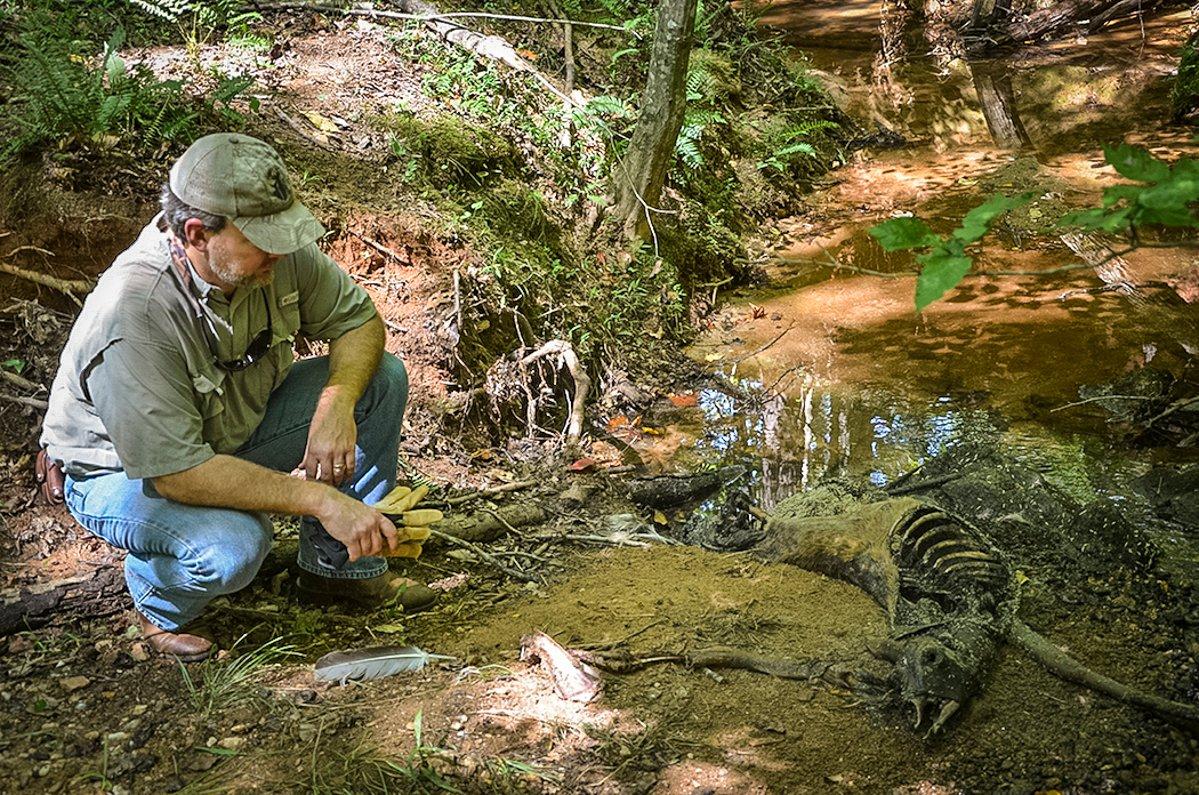Epizootic Hemorrhagic Disease can have devastating effects to whitetails in the late summer
From disease to predation to habitat destruction, whitetails and other cervids face many threats. But during the summer months, Epizootic Hemorrhagic Disease (EHD) rises to the top of the list. And there are reports of it almost every year. Thoughts of truly bad years: 2007, 2012, 2013 and 2017 come to the forefront. We dread inevitable repeat outbreaks.
EHD is spread through infected midges, also referred to as no-see-ums. Not all midges carry the virus, but those that do can potentially infect deer. It's commonly confused with Blue Tongue, which is a similar but separate strain of virus.
It's difficult to prepare for EHD. There are numerous strains of the virus, and different ones seem to pop up in areas where they weren't previously located. Among other reasons, this makes it difficult to immunize or prep deer for a potential outbreak, especially in wild herds.
When you find one case of EHD, there are generally more nearby. But it is a localized disease that can wipe out 30 to 40% of the deer population (potentially more) on one farm, and not impact a property a few miles down the road.
Fortunately, not all deer that contract EHD will succumb to it. Survivors can build up short-term immunities. Oftentimes, deer that do get it and live will exhibit sloughing of the hooves. They will be cracked and deformed. It's not uncommon to see such occurrences, especially in areas that take a heavy hit from the disease. Check deer you harvest to see if they show this post-recovery symptom.
The good news? As of right now, reports are minimal other than a three- to four-county area in south-central Iowa.
Unlike some other diseases, it is safe to eat a deer that has/had EHD. No studies have suggested humans can get the disease. It seems to mostly affect deer, other cervids and cattle. Even direct bites from a midge fly carrying the disease are of no known threat to other mammals.
All things considered, will EHD be a factor in 2019? It already is, but we haven't seen a major outbreak ... yet. A recent report from a local Fox News station stated the Indiana Department of Natural Resources confirmed a deer tested positive for EHD in Clark County. They go on to say unverified reports have come in from as many as 10 different Indiana counties.
Deer infected with EHD may appear depressed or weak and often seek out water. Other signs may include a blue-tinged tongue, swelling of the head, neck or eyelids, ulcers on the tongue and the oral cavity, or sloughed hooves, said Dr. Nancy Boedeker, DNR wildlife veterinarian.
It's also spreading through western Kentucky. According to The Outdoor Wire, Murray State University's Breathitt Veterinary Center recently confirmed to the Kentucky Department of Fish and Wildlife Resources that a Graves County deer tested positive for the disease. Other possible cases involving 22 deer in 11 counties have been reported and the number could grow in the coming weeks.
In Texas, a report was released by the Texas A&M Veterinary Medical Diagnostic Laboratory on July 29, stating that several pen-raised deer were found dead due to EHD. And it seems to be hitting the hardest in Iowa. Facebook reports of numerous (untested) wild dead deer in southern Iowa have been making rounds on social media. Several photos of dead mature bucks that are believed to be EHD cases are floating around the web.
Y'all better start checking your farms around Warren, Clarke and Lucas County, said an anonymous resident of southern Iowa. He said there are lots of EHD victims this year and that it could even be devastating for the area. He claims to have found 16 along one creek in Warren County, Iowa.
The good news? As of right now, reports are minimal other than a three- to four-county area in south-central Iowa. And small, localized cases of EHD occur almost every year. Plus, it's getting somewhat late in the summer for a serious, widespread event to begin. But EHD can spread swiftly. There's still time for it to have an impact. Consistent rainfall can help. But the threat only truly subsides after the first frost. Here in Kentucky, it's been very hot and dry.
So, pray for rain. And pray for the first frost.
Don't Miss: Has CWD Ever Actually Killed a Deer?
Check out more stories, videos and educational how-to's on deer hunting.







